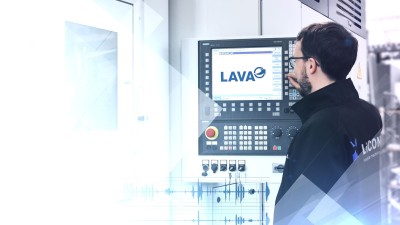Smart data supports the LiCON customers
LiCON expands customer benefits in the machining process with LAVA

Over the course of time, experienced machine operators have intuitively learned how to use the machine and which "adjusting screws" need to be turned in order to improve unstable machining processes. This has always involved an overall understanding of all components in the power flow, which are crucial for a stable, chatter-free and therefore successful machining process. Over decades, they gained intensive experience with literally "their machine tool" and often also with the identical workpiece. As a result, they knew how to optimize the machining process step by step and intuitively.
Today, smart data supports setters, some of whom achieve even better results than the "old hands" of the past. With this in mind, LiCON is working on semi-automated methods that take into account the different influences of the components used in the machine tool and determine cutting data for an optimized cutting process from this complex overall situation.
The prerequisite for a stable, chatter-free machining process is always a machining center that is optimized in terms of dynamic rigidity in combination with the work spindle used. The workpiece carrier and the cutting tool used also have a significant influence on the quality of the machining process.
With LAVA, which stands for LiCON Added Value Analyzer, the Laupheim-based company has been pursuing the approach of collecting various data during the machining process for several years. The overall information from all the data is used to develop approaches that lead to a better machining process. LAVA supports the optimization of machining parameters, which reduces cycle times and often also increases tool life.
Machine operators usually react to chattering by reducing the cutting data. The following example shows that this does not always have to be effective. In this case, it was shown that even an increase in the cutting data and thus a shorter cycle time leads to better cutting performance and lower tool costs.
Example of the benefits of optimizing a machining process with LAVA:
A user had noticed the vibrations and the associated tool wear. The cutting data was optimized with LAVA. However, the cutting values were not reduced, but actually increased by 33 percent:
· Before optimization of the values: V = 357.5 mm/min, s = 955 rpm, fz = 0.125 mm
· After optimization of the values: V = 477.5 mm/min, s = 1,273 rpm, fz = 0.125 mm
The result
Two plus points with a reduction in tool costs and an increase in output.
The analysis shown here has two positive effects: machine output and tool life were increased simultaneously. The use of the data obtained presupposes that the overall system, consisting of the machine tool, workpiece clamping and cutting tools and their holders, represents a high-performance overall system. Only then can meaningful conclusions and computational optimizations be implemented.
A lot helps a lot – for many years, this was the guiding principle in mechanical engineering design. This motto no longer works in the stress field of the shortest possible cycle times and maximum metal removal rates. This is why LiCON machining centers are designed and optimized according to the latest modal analysis methods. This is a key success criterion for creating tangible added value for the customer in this area of digitalization.
Download nowDownload the complete press release (PDF file)

We are delighted to be part of issue 23 of the Produktion.
Download nowThe press release in Produktion for download (PDF file in German)